Chittorgarh Fort Chittor : Chittorgarh Fort is a historical fort located in Chittorgarh city of Rajasthan state. It is a major city of Mewar state. It is a city situated on the banks of Gambhiri and Birch rivers. The main attraction in Chittorgarh is the Chittorgarh Fort. One of the largest forts in India and marked as a UNESCO World Heritage Site, this fort is spread on a hill about 180 meters high above sea level. Chittorgarh Fort is spread over an area of 280 hectares. Even today, the families of the people who worked in the palace since ancient times live in this fort.
Chittorgarh is a popular attraction for history buffs and those interested in Rajput culture and heritage.
चित्तौड़गढ़ किला | चित्तौड़गढ़ का इतिहास
Importance of Chittorgarh Fort
Due to its strategic location in Chittorgarh and the historical events that took place inside this fort, this fort is a very important part of Indian history. Chittorgarh Fort has seen many fierce battles and sieges and its Rajput rulers have fought battles to maintain their independence.
Chittorgarh Fort was besieged thrice for a long time. This fort was first attacked by Alauddin Khilji in 1303, Bahadur Shah in 1535 and Akbar in 1568. These invasions are important events in Indian history.
History of Chittorgarh Fort
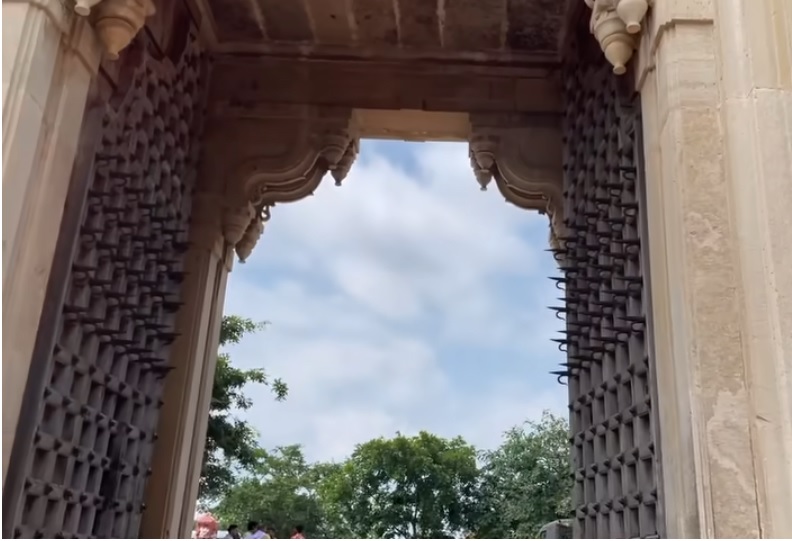
Chittorgarh Fort has a rich history dating back to ancient times. Historians believe that this fort was probably built in the 7th century or even before that. Some people also believe that some part of this fort is from the Mahabharata period. It is said that it was built by Bhima.
The historical name of Chittorgarh is Chitrakoot and the word Chittor is a form of the word Chitrakoot. Chittor has been the capital of Mewar state for a long time. Under the rule of the Guhils and later the Shishodiya dynasty, Chittorgarh became a major stronghold of the Rajput state of Medapata, also known as Mewar.
Bappa Rawal was a king of the Mewar Kingdom in Rajasthan and a member of the Guhila Rajput clan. He is considered the most brave and skilled ruler in Rajput history. Due to his bravery, Mewar extended till Iran during his rule. Although not much historical information is available about the time of Bappa Rawal, but according to Mewar genealogy and Ekling Mahatmya, his rule lasted from 728 to 753. After leaving the administrative work, Bappa Rawal went to the forest to do penance to Lord Shiva.
Rawal Ratan Singh was the last king of the Rawal dynasty. In 1303, Rawal Ratan Singh died in the battle between Chittor and Alauddin Khilji. After Rawal Ratan Singh, Rana Hamir Singh from the Rana dynasty regained control of Chittorgarh and became the founder of the Rana branch as the ruler of Mewar. From his time till Maharana Uday Singh, Chittor remained the capital of Mewar but due to the invasions of Mughals, this capital was later established in Udaipur.
Queen Padmavati, Queen Karmavati and Mirabai also had a connection with Chittorgarh Fort. Rani Padmavati was the wife of Rawal Ratan Singh. Rani Karmwati was married to Rana Sanga of Mewar and was the mother of Rana Uday Singh. Rani Karmavati sacrificed her life in Jauhar in an attempt to protect Mewar from Bahadur Shah of Gujarat when the Rajput warriors were defeated. Rani Karnavati is remembered for her bravery, courage and defense of her kingdom.
About Chittorgarh Fort
Chittorgarh Fort is one of the largest forts not only in India but also in Asia and a UNESCO Heritage Site. Chittorgarh Fort is a symbol of the bravery of the Rajput rulers. The history of this fort is older than Mewar. Historians believe that Chittorgarh Fort was built during the Maurya period. It was built by Chitrangad Maurya.
Bappa Rawal, who established Mewar as a state in the 8th century, established Mewar from this fort. There is not much information available in history about Bappa Rawal, but there is no doubt that he had expanded the borders of Mewar to present-day Afghanistan and Iran. The city of Rawalpindi located in Pakistan is still known by the name of Bappa Rawal.
Chittorgarh Fort has many Jain temples, pillars, lakes and ponds along with many stories related to it from the pages of history. Bappa Rawal, Rawal Ratan Singh, Hamir Singh, Rana Kumbha, Rana Sangram Singh, Maharana Uday Singh and Maharana Pratap are especially famous among the Mewar rulers. Maharana Uday Singh was the last ruler to rule from Chittorgarh. During his rule, due to the continuous attacks of the Mughals, he shifted his capital to Udaipur and that city was called Udaipur in his name.
Chittorgarh Fort has witnessed the saga of not only the brave rulers of Mewar but also the Rajput queens. The main ones among them are Rani Padmavati, Rani Karnavati and Mirabai.
Seven Gates – Chittorgarh Fort
Chittorgarh Fort has a total of seven gates called poles. Their names were Padan Pol, Bhairon Pol, Hanuman Pol, Ganesh Pol, Jodla Pol, Laxman Pol and Ram Pol. These poles or gates with pointed arches were strengthened to protect them from elephants and cannon balls. For this, sharp iron nails were placed on the main gate of the fort so that elephants could not attack and break the gate. Space was made above the pole for soldiers equipped with bows, arrows and spears.
Rana Kumbha Palace Chittorgarh Fort

Rana Kumbha Palace is a palace located inside the Chittorgarh Fort complex. This palace was built by Bappa Rawal, the founder of Mewar in the year 734. This palace was rebuilt by Maharana Kumbha in the 14th century. Maharana Kumbha was known as a skilled ruler and had never lost any battle. He was the 48th Rana of Mewar. Maharana Kumbha had built many forts in Mewar for security reasons. Kumbhalgarh Fort is a fort built by Maharana Kumbha, which is also a famous tourist attraction today.
Kumbha Mahal is the largest monument of Chittorgarh Fort and is located near the entrance of the fort. The Vijay Stambh, a symbol of victory, is located a few steps away from the palace. Maharana Udai Singh, the founder of Udaipur and father of Maharana Pratap, was born in this palace. The Kumbha Mahal also includes elephant and horse stables. Rana Kumbha Palace is also famous for its Rajputi architecture. Although today this palace has become like a ruin, but the remains of its glorious history can still be seen here.
The rulers of Mewar used to start their day only after worshiping the Sun and hence whenever the Sun was covered with clouds, a huge golden figure of the Sun was installed in the palace for that day. This figure of Surya can now be seen in the Sun Temple in Udaipur City Palace. When Maharana Udai Singh moved his capital from Chittor to Udaipur, he took that statue from here.
Padmini Palace Chittorgarh Fort
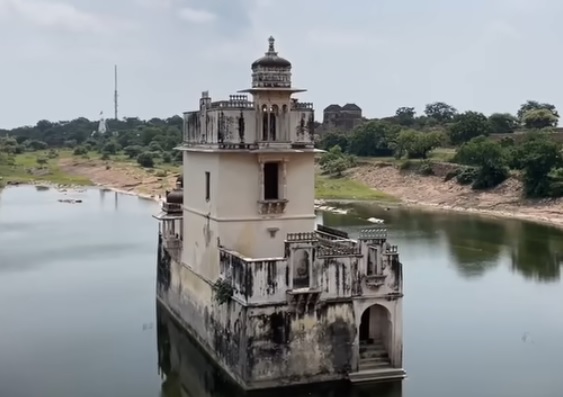
Padmini Mahal is the palace of Queen Padmini located in the Chittorgarh Fort complex. Queen Padmini or Padmavati, the second wife of Rawal Ratan Singh, the ruler of Mewar state, lived in this palace. Malik Muhammad Jayasi’s famous period composition “Padmavat” has been written about Queen Padmini. According to Padmaavat, Queen Padmini was a Sinhalese (Sri Lankan) princess about whom Hiraman Nah’s parrot had told Rawal Ratan Singh. Impressed by the beauty of Padmavati, Rawal Ratan Singh married her.
To get a glimpse of Padmini, Alauddin Khilji laid siege to Chittorgarh for several months. It is believed that later Rawal Ratan Singh agreed to let Alauddin Khilji see the glimpse of Queen Padmini through the mirror installed in the palace, but even after this Alauddin Khilji attacked Chittorgarh. Rawal Ratan Singh died in the war and all the queens and other women committed Jauhar. Padmini Palace is located in the southern part of the Chittorgarh Fort complex.
Some historians consider Queen Padmavati to be just an imagination.
Meera Mandir Chittorgarh Fort
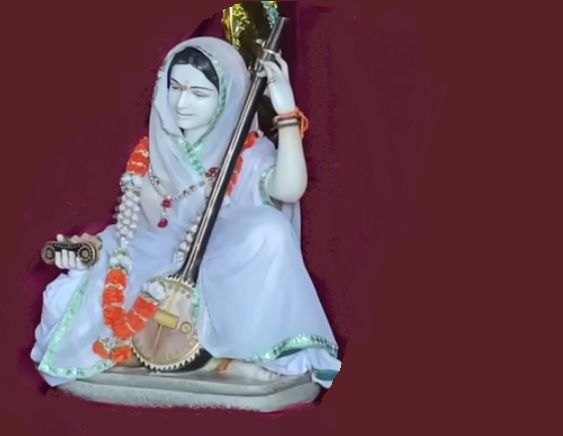
Dedicated to the famous poetess and devotee of Lord Krishna, Meera Bai, this temple is a popular pilgrimage site for devotees and tourists.
Meera Temple is a temple located in the Chittorgarh Fort complex dedicated to the devotion of Lord Krishna and his supreme devotee Meera. Meera Temple is situated near the Kumbhaswamini Temple in the fort complex. Meera Bai was married to Bhojraj, son of Rana Sangram Singh of Mewar dynasty. Meera was a great devotee of Lord Krishna and wrote many hymns dedicated to Lord Krishna which later became very famous. Meera Bai’s husband Bhojraj died due to illness and the Mewar royals wanted Meera to commit sati with her husband as was the tradition.
Meera wanted to remain alive and worship Lord Krishna and this was completely distasteful to her husband’s brother. He started trying to kill them but all his attempts to kill Meera failed. At that time, Meera Bai used to spend her time in this temple of Lord Krishna. Influenced by his devotion, this temple was built by Rana Sangram Singh, who was the father of Bhojraj. Fed up with the attempts made by others to kill her, Meera left Chittorgarh. It is believed that Meera spent her last time in Dwarkapuri and she was absorbed in the idol of Lord Krishna.
This temple is still a symbol of Meera’s devotion and love for Shri Krishna.
Kali Mata Mandir Chittorgarh Fort
Kali Mata Temple located in the Chittorgarh complex is an iconic temple dedicated to Goddess Kali. Kali Mata Temple or Kalika Mata Temple was built in the 8th century. This temple is dedicated to Goddess Bhadrakali, the symbol of power. Goddess Kali is considered as the Kuldevi of Chittorgarh. This temple was actually a Sun temple built in the 8th century, part of which was destroyed during Alauddin Khilji’s attack on Chittor. This temple was rebuilt during the time of Rana Kumbha, the ruler of Mewar in the 15th century. This temple is especially famous for its attractive design, carvings on the walls and its pillars. Kali Mata Temple is a major attraction for devotees and tourists in Chittorgarh.
Gaumukh Kund Chittorgarh Fort
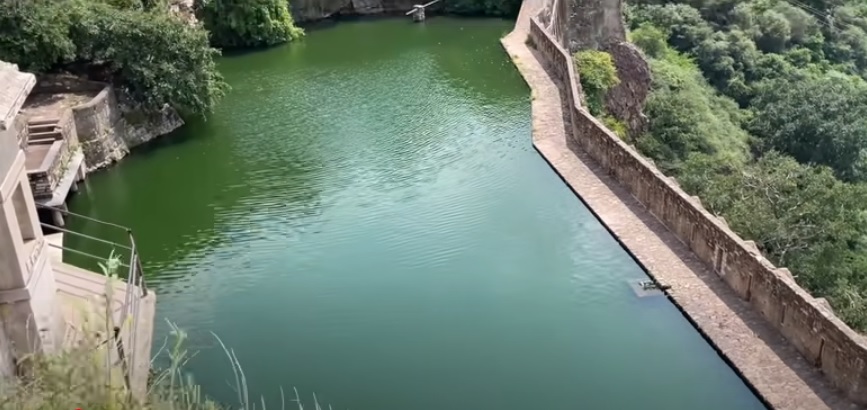
Gaumukh Kund is located in the Chittorgarh Fort complex. It is a sacred place and it is believed that the water of this pond never dries up. Gomukh Kund is believed to be related to sage Markandeya. According to the mythological story related to this, Sage Markandeya, after traveling to the holy religious places of India, wanted to do his penance here. For this he prayed to Lord Shiva to provide water to this place.
Later this place was taken inside the fort. It is believed that the source of water of this pond is from the mouth of a cow shaped rock, hence it is called Gaumukh. Water from this source flows into a pond. This pond has been the main source of water for the fort during the war. Tourists and devotees keep coming here throughout the year.
Vijay Stambh Chittorgarh Fort
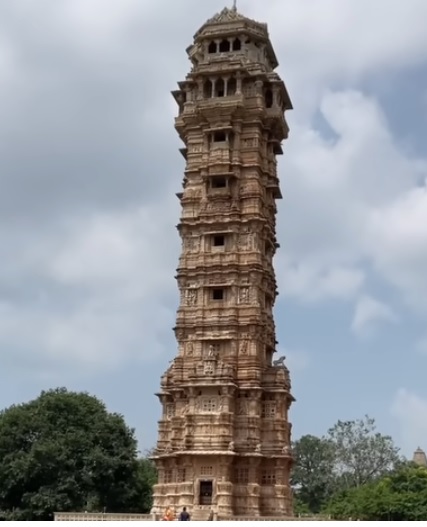
Vijay Stambh is known as a symbol of victory. Vijay Stambh is a 9 storey high tower. The construction of Vijay Stambh during the time of Rana Kumbha symbolizes his victory over the combined forces of Malwa and Gujarat. Vijay Stambh was built between 1442 and 1449. The height of the Vijay Stambh is 37.19 meters (122 ft). This tower is made of red sandstone and white marble. The architecture of this tower is a mix of Rajput and Islamic styles. On the top floor of the Vijay Stambh there are inscriptions detailing the genealogy of the rulers of Chittor.
The Vijay Stambh symbolizes the respect that the rulers of Chittor had for other religions. This pillar is an example of rich history, culture and heritage. Till a few years ago, tourists were allowed to enter the Vijay Stambh and also visit the upper floors, but now it has been closed.
Kirti Stambh Chittorgarh Fort
Kirti Stambh was built in the Chittorgarh Fort complex by a Jain merchant during the reign of Rawal Kumar Singh in the 12th century. It is dedicated to Jain Tirthankara Rishabhnath. Kirti Stambh is a seven-storey tower with a height of 22 meters (72 ft). This tower is built in Solanki (Gujarati) style. This tower is famous for its unique carvings.
Kirti Tower is decorated with sculptures from bottom to top. Kirti Stambh is a symbol of the rich cultural and religious heritage of Mewar state.
Shyama Mandir Chittorgarh Fort
Shyama Temple: Located in the Chittorgarh Fort, the Shyama Temple also known as the Kumbha or Kumbhaswamini Temple was built in the 8th century. This temple and the idols located in the temple were destroyed during the attack of Alauddin Khilji. In the 15th century, Rana Kumbha renovated this temple and installed the idol of Lord Krishna in the temple. The style in which this temple is built is called Indo Aryan Architecture. This temple is built on a high platform.
Panna Mahal Chittorgarh Fort
A part of the palace located in the Chittorgarh Fort complex is also known as Panna Mahal. Along with Kumbha Mahal, this palace was built by Rana Kumbha. It is believed that Maharana Udai Singh, the founder of Udaipur, was born in this part of the palace. This palace is located near the entrance of the fort and the Vijay Stambh.
Panna Dhay used to take care of Udai Singh, the fourth child of Rana Sanga. Due to some historical events that took place in Mewar in the 16th century, Banveer (Udai Singh’s uncle) wanted to kill Udai Singh and become king himself. At that time Uday Singh was very young, he was just a child. To save the life of Uday Singh, Panna Dhay sacrificed her son’s life. Because of this sacrifice, Panna Dhay is known as the embodiment of sacrifice in Indian history. Many awards and honors are also given in his honor in Rajasthan.
Johar Kund Chittorgarh Fort

A small garden has been built in the Chittorgarh Fort complex, which has been built at the same place where the Jauhar Kund of the queens used to be. Whenever during the war or after the end of the war, the news of defeat reached the palace, then all the women present in the palace including all the queens used to commit suicide by jumping into the burning fire. This was done so that they could end their lives before the enemy could reach the palace and harm them.
Jauhar Kund located in Chittorgarh Fort has been witness to three major mass Jauhars in history. This Jauhar Kund is an important historical site which is representative of the bravery and sacrifice of Rajput women. Those brave and courageous women chose the path of death rather than be humiliated at the hands of the enemy. This place gives an exciting experience. Any person who is familiar with Rajputana history cannot help but be impressed after coming here. This is a unique experience for the tourists coming to Chittorgarh.
Annual Festival: A festival called Jauhar Mela takes place every year in Chittorgarh where ancestors are remembered. The celebration of this festival is a tribute to all the women who sacrificed their lives in Jauhar.
Samadhishwar Mandir Chittorgarh Fort

Samadhishwar Temple is an ancient temple dedicated to Lord Shiva in the Chittorgarh Fort complex. This temple is one of the oldest temples of Chittorgarh. This temple is famous for the huge and special Shivalinga. In the temple, along with Lord Shiva, there are also idols of Lord Vishnu and Brahma which are together in Trimukha form. An annual fair is organized every year on the occasion of Shivratri in Samadhishwar Temple.
Light and Sound Show – Chittorgarh Fort
A mesmerizing light and sound show is organized in the Chittorgarh Fort in the evening. This show showcasing the history and culture of Chittorgarh is organized in the Kumbha Palace within the fort premises.
This light and sound show usually starts at 7:00 pm and lasts for about an hour. Sometimes the light and sound show is canceled depending on the weather, so tourists should check in advance.
This light and sound show brings alive and narrates the rich history of Chittorgarh and the main events of the valley. This show can be very important for those interested in Indian history.
To watch this show, you can buy a ticket for Rs 50 and enjoy the show.
How to reach – Chittorgarh Fort
To visit Chittorgarh Fort, one can reach here by any means. Chittor city is well connected to other cities of India by rail and road. There is no airport in Chittor city but one can reach nearby Udaipur city by flight.
Chittaurgarh Fort by Air
If you are traveling by flight, then the nearest airport to Chittorgarh is Maharana Pratap Airport in Udaipur. The distance from here to Chittorgarh is about 70 kilometers which can be covered by taxi or state transport bus. Daily flights are available to Udaipur from cities like Delhi, Mumbai etc.
By train
Chittorgarh is a railway station that is well connected to major cities of India such as Delhi, Mumbai, Jaipur and Udaipur. To reach Chittorgarh Fort from the railway station, you can take a taxi or you can also reach by local bus.
By Road
Chittorgarh is well connected by road to major cities of Rajasthan and other parts of India. You can take a bus or hire a taxi to reach Chittorgarh Fort. If you want to come here by driving yourself then you can reach easily.
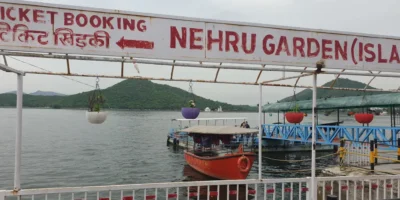

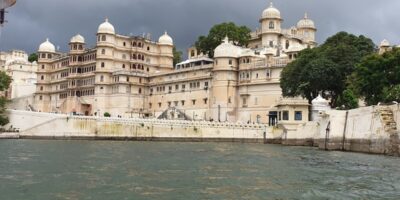
Leave a Reply